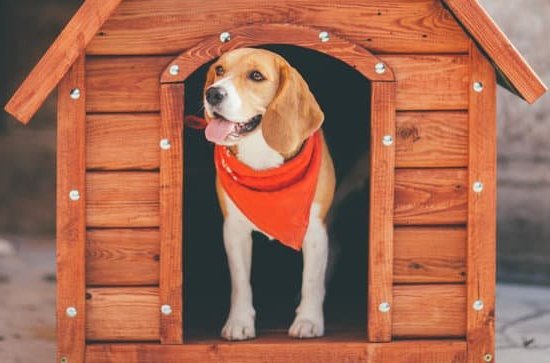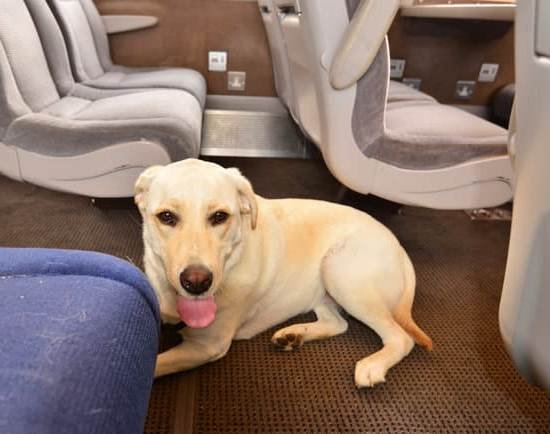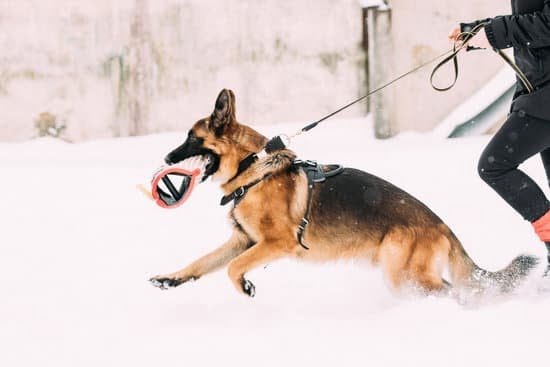Guard dogs play a crucial role in protecting homes and businesses, especially in today’s increasingly security-conscious society. With the rising need for effective security measures, well-trained guard dogs have proven to be valuable assets in deterring potential threats. These formidable canines possess the ability to provide not only physical protection but also a sense of security and peace of mind.
In an era where property crimes and personal safety concerns are prevalent, guard dogs serve as a strong deterrent against criminals. They act as an early warning system, often preventing unauthorized access or even intimidation from occurring in the first place. The mere presence of a trained guard dog can dissuade intruders and burglars, as they understand the potential risks involved when dealing with these highly trained animals.
Over the years, numerous breeds have been recognized for their suitability as effective guard dogs. Breeds such as German Shepherds, Rottweilers, Doberman Pinschers, and Belgian Malinois are known for their exceptional intelligence, loyalty, agility, and natural protective instincts. Through careful selection based on breed characteristics and traits that align with the specific security needs of an individual or a business establishment, the right breed of guard dog can be chosen to ensure optimal results.
In this article, we will delve into the comprehensive training process that transforms ordinary puppies into reliable protectors. From socialization techniques during early puppyhood to advanced scent detection training and controlled aggression exercises, this article will provide insights into how guard dogs are trained to fulfill their essential role in providing security.
The Selection Process
When it comes to training a guard dog, selecting the right breed is crucial. Not all dogs are suitable for this role, as it requires specific characteristics and traits that enable them to effectively protect homes and businesses. In this section, we will explore the various breeds commonly used as guard dogs, discuss their unique abilities, and highlight why certain breeds are more suitable for this task than others.
There are several factors to consider when choosing a breed for guard dog training. One important consideration is size, as larger breeds tend to have a more intimidating presence and physical strength. Breeds such as German Shepherds, Rottweilers, and Doberman Pinschers are popular choices due to their imposing stature and protective instincts.
Temperament is another key factor in selecting a guard dog breed. Dogs used for guarding should have a balanced temperament that allows them to be vigilant and fearless while still being stable and manageable in different situations. Breeds like Belgian Malinois, Boxers, and Bullmastiffs possess these traits and excel in guarding roles.
Additionally, specific abilities of certain breeds make them better suited for certain tasks within the realm of guarding. For example, German Shepherds are versatile and highly trainable, making them ideal for personal protection or search-and-rescue work. Boxers are known for their unwavering loyalty and exceptional agility, which makes them great candidates for property protection or crowd control scenarios.
| Breed | Traits | Abilities |
|---|---|---|
| German Shepherd | Loyal, intelligent, obedient | Personal protection; search-and-rescue; drug detection |
| Boxer | Fearless, energetic, agile | Property protection; crowd control; obedience competition |
| Rottweiler | Fearless, calm, confident | Guarding property; personal protection; police and military work |
Early Puppyhood
The early stages of a puppy’s life are crucial in setting the foundation for their future as a guard dog. Starting guard dog training at an early age helps to shape their behavior and develop their skills from the beginning. During this stage, it is important to focus on socialization techniques to ensure the puppy develops a balanced temperament.
Socialization plays a key role in helping guard dogs become comfortable and confident in various environments and situations. Exposing puppies to different people, animals, sounds, and settings early on helps them become well-rounded and adaptable dogs, which is essential for their role as a guard dog. This can be done through controlled interactions with trusted individuals or by enrolling them in puppy socialization classes.
Positive reinforcement is another crucial aspect of early puppyhood training. It involves rewarding desired behaviors with treats, praise, or playtime, while ignoring or redirecting unwanted behaviors. Positive reinforcement creates a strong bond between the trainer and the puppy, making training more effective and enjoyable. It also helps the puppy associate training sessions with positive experiences, motivating them to learn and obey commands.
During this stage of training, basic obedience commands such as sit, stay, come, and heel should be introduced. These commands serve as building blocks for future training and lay the groundwork for more advanced exercises. Consistency and repetition are important during this period to reinforce these commands consistently until they become second nature to the puppy.
In summary, setting the foundation during early puppyhood is vital in preparing guard dogs for their future roles. Socialization techniques help puppies develop balanced temperaments and adaptability while positive reinforcement establishes a strong bond between trainers and puppies. Basic obedience commands introduced during this stage lay the groundwork for more advanced training later on.
| Training Method | Description |
|---|---|
| Socialization techniques | Involves exposing puppies to various people, animals, sounds, and environments to develop adaptability and confidence. |
| Positive reinforcement | Uses rewards such as treats, praise, or playtime to motivate puppies to learn and obey commands. |
| Basic obedience commands | Includes commands like sit, stay, come, and heel that serve as building blocks for future training. |
Basic Obedience Training
Understanding the Fundamentals
In order to become effective guard dogs, it is crucial for these canines to undergo basic obedience training. This foundational training lays the groundwork for more advanced skills and ensures that the dog can follow commands promptly and reliably. Basic obedience training teaches guard dogs essential skills such as “sit,” “stay,” and “recall.” These commands provide the foundation for control and communication between the handler and the dog in various situations.
Training Methods and Techniques
There are several methods used to train guard dogs in basic obedience. Positive reinforcement is a widely used technique that involves rewarding the dog with treats, praise, or play when they exhibit the desired behavior. This approach helps motivate and encourage the dog to obey commands willingly. Consistency and repetition are key during this stage of training to reinforce desired behaviors.
Handlers may also use clicker training, where a click sound is paired with a reward, such as a treat or toy, whenever the dog completes a command successfully. The click serves as a signal that indicates to the dog they have performed correctly and will be rewarded.
The Role of Consistency and Repetition
Consistency is vital in basic obedience training to ensure that the dog understands what is expected of them. Handlers must use consistent cues or words for each command so that the dog can associate them with specific actions. For example, using a firm but calm voice when giving commands like “sit” or “stay” helps create clear associations between words and actions.
Repetition is equally important in reinforcing desired behaviors. Regular practice sessions help solidify these behaviors until they become automatic responses for the dog. It is advised to keep these sessions short but frequent, focusing on one command at a time before moving on to another. Over time, this repetition builds reliability and strengthens the bond between handler and dog.
Overall, basic obedience training sets a strong foundation for guard dogs, providing them with the necessary skills to follow commands and respond appropriately. It establishes a framework of control and communication between the handler and the dog, forming the basis for more advanced training in specific areas such as scent detection and bite work.
Scent and Detection Training
Scent and detection training is a crucial aspect of enhancing a guard dog’s abilities. Guard dogs are often trained to detect intruders, illicit substances, and other potential threats through their exceptional sense of smell. This specialized training enables them to play an even more vital role in maintaining security and protecting homes and businesses.
Specialized Training Methods
During scent and detection training, specific methods are employed to develop a guard dog’s olfactory capabilities. One common technique is imprinting, where dogs are introduced to various scents at a young age. By associating these scents with positive experiences or rewards, the dog develops an understanding that alerting to certain smells leads to positive outcomes.
Another method used is target odor recognition training. Dogs are taught to recognize the specific odors associated with the threat they are being trained for. For example, in narcotics detection training, dogs learn to identify the unique smell of drugs such as cocaine or marijuana. Through consistent exposure and reinforcement, guard dogs become highly proficient in detecting these target odors.
Extensive Practice and Repetition
Effective scent and detection training requires extensive practice and repetition. Dogs need regular exposure to different environments and scenarios where they can apply their skills. This helps them generalize their learning and adapt their detection abilities to various real-life situations.
Handlers use mock scenarios during training exercises to simulate potential threats. For example, a guard dog may be tasked with searching vehicles or luggage for illicit substances using their scent detection skills. These simulated scenarios enable both the handler and the dog to improve their coordination while identifying potential threats accurately.
Guard dogs also undergo ongoing reinforcement exercises throughout their lives to maintain their proficiency in scent detection. Regular training sessions include searches in unfamiliar locations, exposure to new scents, and occasional refresher courses on previously learned odors.
By enhancing a guard dog’s natural ability to detect scents, this type of training elevates their effectiveness in safeguarding homes and businesses. The combination of a guard dog’s keen sense of smell and their trained response to detecting potential threats makes them an invaluable asset in maintaining security.
Bite Work Training
Bite work training is a crucial aspect of guard dog training, as it teaches dogs to use controlled aggression when necessary. This type of training requires careful supervision and guidance to ensure the dog understands when and how to bite on command. It is essential for the dog’s safety and the safety of others that they can distinguish between friend and foe.
To begin bite work training, trainers will first assess the dog’s temperament and level of aggression. They will then introduce equipment such as sleeves or suits for the dog to bite on during training sessions. This helps the dog develop confidence in their biting abilities while also teaching them control.
During the training process, trainers use positive reinforcement techniques to reward the dog when they exhibit appropriate behavior. For example, if a guard dog bites only on command and releases immediately when commanded to do so, they are praised and rewarded with treats or praise. This encourages them to repeat the desired behavior.
It is important to note that bite work training should only be done by experienced professionals who understand canine behavior and have expertise in this area. They can properly guide the dog through each stage of training, ensuring both their safety and effectiveness as a guard dog.
By providing guard dogs with controlled aggression training, handlers are able to equip these dogs with the skills necessary to protect themselves and their handlers in dangerous situations. The rigorous conditioning increases their ability to respond appropriately under high-stress conditions, making them invaluable assets in security roles.
Key points
- Bite work training teaches controlled aggression in guard dogs.
- Trainers assess temperament before introducing bite equipment.
- Positive reinforcement is used to reward appropriate behavior during bite work training.
- Bite work training should only be conducted by experienced professionals.
Overall, bite work training plays a vital role in honing a guard dog’s protective capabilities, ensuring they can effectively respond when faced with potential threats.
Handler Relationship
Guard dogs are not only trained to protect and deter potential threats, but they also rely heavily on their handlers for guidance and support. Establishing a strong relationship with their handler is essential for guard dogs to perform their duties effectively. This section will explore the critical bond between a guard dog and their handler, the training methods used to establish trust and respect, and the significance of effective communication and coordination.
One of the primary goals in building a handler relationship is to establish trust between the guard dog and their handler. Trust is crucial as it enables the dog to confidently follow the handler’s commands and instincts. Through consistent training sessions and positive reinforcement, handlers work towards cultivating that trust in their canine partners.
To establish respect, handlers utilize various training techniques that emphasize clear boundaries and consistent discipline. This can include using reward-based training methods where good behavior is rewarded with treats or praise while undesirable behavior is met with consequences such as withholding rewards or time-outs.
Effective communication between a guard dog and their handler is paramount in ensuring smooth operations. Handlers are trained to use specific verbal cues or hand signals that dogs can easily understand. Consistency in communication helps establish a predictable routine for the dog, minimizing confusion during high-stress situations.
Furthermore, coordination between a guard dog and their handler is vital for seamless teamwork. Handlers learn how to read their dog’s body language and behaviour, allowing them to anticipate any potential threats or changes in the environment. By maintaining a strong partnership based on trust, respect, effective communication, and coordination, guard dogs can perform at their best capacity while keeping both themselves and those they protect safe.
- Establishing trust through consistent training sessions
- Using reward-based training methods to build respect
- Clear communication through verbal cues or hand signals
- Coordinating with the dog by reading body language
Real-Life Scenario Training
One of the crucial aspects of training a guard dog is preparing them for real-life scenarios. While basic obedience training is important, it is equally essential to expose guard dogs to a variety of situations they may encounter in their role. This type of training helps them develop the necessary skills and instincts to handle different environments and respond appropriately to potential threats.
The first aspect of real-life scenario training involves property protection. Guard dogs must learn how to patrol and secure a specific area effectively. Handlers can simulate scenarios such as an intruder attempting to break into a house or someone trespassing on a property. Through repetitive training, dogs become accustomed to these scenarios and are conditioned to react accordingly, alarming their handler and potentially deterring the intruder.
Another critical aspect of real-life scenario training is personal protection. Guard dogs need to learn how to protect their handlers when faced with physical threats. Handlers simulate attacks or threatening behaviors, allowing the dog to practice responding defensively while remaining under control. This type of training helps develop the dog’s protective instincts while ensuring they can differentiate between friend or foe.
Crowd control is also an important part of real-life scenario training for guard dogs who may be deployed in public settings or events with large gatherings of people. Dogs need to learn how to remain calm and focused in such situations without becoming aggressive or overwhelmed by the crowd’s energy. They also need exposure to various loud noises, distractions, and unusual movements that often accompany crowded environments.
By incorporating real-life scenarios into a guard dog’s training regimen, handlers can better prepare them for the challenges they may face on the job. These scenarios provide invaluable opportunities for dogs to practice their skills, reinforce their training, and gain confidence in different situations. Properly trained guard dogs are equipped not only with obedience commands but also with practical skills that make them effective deterrents against potential threats.
Ongoing Training and Maintenance
Once a guard dog has completed its initial training, it is crucial to continue with ongoing training and maintenance to ensure that the dog remains sharp and effective in its role. Ongoing training serves as a way to reinforce the dog’s skills, maintain its alertness, and adapt to changing situations or environments.
Continuous training sessions are essential for keeping a guard dog on top of its game. Regular practice helps the dog stay familiar with the commands it has learned and reinforces desired behaviors. It is recommended to conduct short training sessions several times a week rather than long, infrequent sessions. This approach keeps the dog engaged, focused, and motivated throughout the training process.
In addition to general obedience training exercises, there are various activities that can help keep a guard dog mentally and physically fit. One such activity is agility training. Agility courses provide opportunities for dogs to navigate obstacles, jump over hurdles, and improve their coordination while staying attentive to their handler’s commands. This type of training not only enhances physical abilities but also promotes mental sharpness and problem-solving skills.
Another valuable aspect of ongoing maintenance for guard dogs is exposure to different environments and scenarios. It is essential for these dogs to be familiar with real-life situations they may encounter while on duty. Guard dogs should be exposed to various scenarios such as property protection, personal protection, crowd control, or even simulated intruder scenarios. These real-life scenario trainings allow the dogs to adapt quickly to different situations and remain calm under pressure.
Conclusion
In conclusion, well-trained guard dogs possess immense value in today’s society. As discussed throughout this blog post, guard dogs play a vital role in the protection of homes and businesses by deterring potential threats.
Through a meticulous selection process, early puppyhood training, and specialized obedience and scent detection training, these dogs develop the skills necessary to effectively safeguard their surroundings. Additionally, the establishment of a strong bond between handler and dog, exposure to real-life scenarios, and ongoing training and maintenance ensure that these guard dogs remain sharp and prepared for various situations.
The importance of professional training cannot be overstated when it comes to providing effective security through guard dogs. Professional trainers have the knowledge and experience to properly select suitable breeds based on individual needs. They also possess the expertise to train these dogs using scientifically backed methods that prioritize positive reinforcement and responsible handling techniques.
Responsible ownership is another essential aspect of maximizing the value of well-trained guard dogs. Owners must understand their role in continuing their dog’s training throughout its life by attending regular sessions with professional trainers or engaging in appropriate activities that challenge the dog mentally and physically. By doing so, owners can maintain their dog’s skills and alertness while ensuring that they remain well-behaved members of society.
Frequently Asked Questions
How are dogs trained to be guard dogs?
Dogs are trained to be guard dogs through a combination of obedience training and specialized guard dog training. The process typically starts with basic obedience training, where dogs learn commands such as sit, stay, come, and heel. Once they have a solid foundation in obedience, the dogs then receive specific guard dog training.
This involves teaching them to identify potential threats, bark on command, and distinguish between friend and foe. They are also trained to respond to certain cues or signals from their owners indicating that they should protect and defend their property or loved ones. The training methods used may vary, but often involve positive reinforcement techniques like rewards and praise for desired behaviors.
How long does it take to train a dog to be a guard dog?
The length of time it takes to train a dog to become a guard dog can vary depending on several factors such as the breed of the dog, its individual temperament, the intensity of the training program, and the skills desired from the dog. While some basic obedience training can be accomplished in a matter of weeks or months, specialized guard dog training can take several months or even up to a year.
This duration allows for thorough conditioning of the dog’s natural protective instincts along with mastering advanced skills necessary for guarding duties. Consistency in training exercises, regular practice sessions, and ongoing reinforcement are crucial aspects that contribute to successfully transforming a regular dog into an effective guard dog.
How do dogs know when to guard?
Dogs have instinctual behaviors that help them know when to guard based on various cues they pick up from their environment and human body language. They are highly perceptive animals who rely heavily on their senses such as sight, hearing, and smell to detect potential danger or threats around them. With proper training and socialization, dogs can learn additional cues from their owners or handlers that indicate it is time to go into guard mode.
These cues can include verbal commands like “guard”, specific hand signals or body posture from their owner that communicate a perceived threat. Establishing clear communication channels during training helps dogs understand when guarding is appropriate, such as when a stranger approaches the owner’s property or when a family member displays signs of distress. Additionally, some guard dog breeds have inherent protective instincts that make them naturally more prone to guarding behaviors without extensive training.

Welcome to the blog! I am a professional dog trainer and have been working with dogs for many years. In this blog, I will be discussing various topics related to dog training, including tips, tricks, and advice. I hope you find this information helpful and informative. Thanks for reading!





